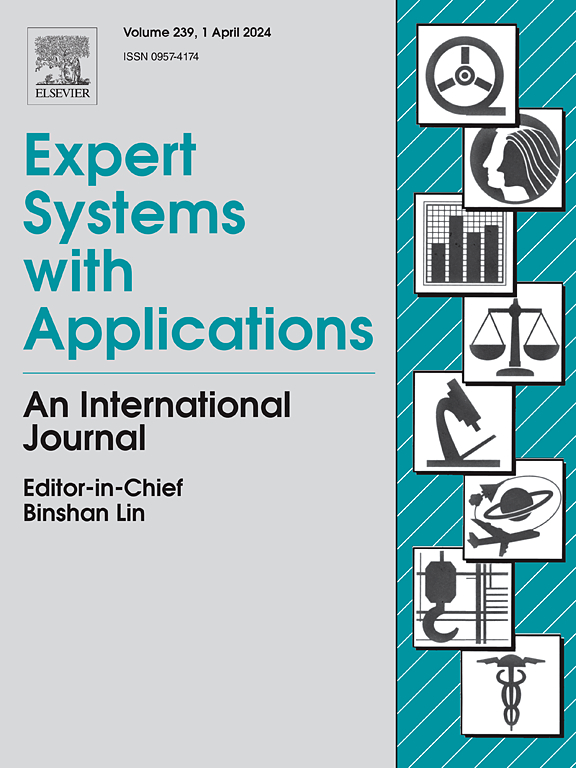Study on runoff forecasting and error correction driven by atmosphere–ocean-land dataset
IF 7.5
1区 计算机科学
Q1 COMPUTER SCIENCE, ARTIFICIAL INTELLIGENCE
引用次数: 0
Abstract
Accurate runoff forecasting results can not only provide an important basis for flood control scheduling, but also provide scientific support for water resources optimization, which promotes the maximization of the overall benefits of the basin. To further explore the inherent mechanisms of the atmosphere–ocean-land factors driving runoff changes, this study proposes the factors dimension reduction and interpretation framework based on Pearson, eXtreme Gradient Boosting and SHapley Additive exPlanations (P-XGBoost-SHAP). Base on this, the Gaussian Process Regression (GPR), Long Short-Term Memory neural network (LSTM) and Support Vector Machine (SVM) models are used to construct the atmospheric-ocean-land data-driven runoff prediction model. Meanwhile, for the runoff prediction residuals, this paper proposes an error multi-step correction framework based on ensemble empirical mode decomposition and autoregressive model (EEMD-AR). The case study of Lianghekou hydrological station shows that the factor dimension reduction and interpretation framework can greatly reduce the input dimension of the model, and explain the factors globally and locally by using SHAP Value. Compared with the traditional Random Forest (RF) dimension reduction method, it shows higher prediction accuracy. The Nash-Sutcliffe efficiency coefficient (NSE) can be increased to about 0.93, which is 4.91 % and 1.97 % higher than the series–parallel coupling (AR-Parallel) and empirical mode decomposition-autoregressive (EMD-AR) correction methods, respectively. The accuracy of the runoff forecasting prediction is improved while reducing the input dimension of the model.
大气-海洋-陆地数据集驱动的径流预报与误差修正研究
准确的径流预报结果不仅能为防洪调度提供重要依据,还能为水资源优化配置提供科学支撑,促进流域综合效益的最大化。为进一步探索大气-海洋-陆地因子驱动径流变化的内在机理,本研究提出了基于皮尔逊、极梯度提升和SHapley加性前规划(P-XGBoost-SHAP)的因子降维与解释框架。在此基础上,利用高斯过程回归(GPR)、长短期记忆神经网络(LSTM)和支持向量机(SVM)模型构建大气-海洋-陆地数据驱动的径流预测模型。同时,针对径流预测残差,本文提出了基于集合经验模态分解和自回归模型(EEMD-AR)的误差多步校正框架。两河口水文站的案例研究表明,因子降维与解释框架可以大大降低模型的输入维度,并利用 SHAP 值对因子进行全局和局部解释。与传统的随机森林(RF)降维方法相比,其预测精度更高。Nash-Sutcliffe 效率系数(NSE)可提高到约 0.93,分别比序列-平行耦合(AR-Parallel)和经验模态分解-自回归(EMD-AR)修正方法高出 4.91 % 和 1.97 %。在降低模型输入维度的同时,径流预报预测的精度也得到了提高。
本文章由计算机程序翻译,如有差异,请以英文原文为准。
求助全文
约1分钟内获得全文
求助全文
来源期刊

Expert Systems with Applications
工程技术-工程:电子与电气
CiteScore
13.80
自引率
10.60%
发文量
2045
审稿时长
8.7 months
期刊介绍:
Expert Systems With Applications is an international journal dedicated to the exchange of information on expert and intelligent systems used globally in industry, government, and universities. The journal emphasizes original papers covering the design, development, testing, implementation, and management of these systems, offering practical guidelines. It spans various sectors such as finance, engineering, marketing, law, project management, information management, medicine, and more. The journal also welcomes papers on multi-agent systems, knowledge management, neural networks, knowledge discovery, data mining, and other related areas, excluding applications to military/defense systems.
 求助内容:
求助内容: 应助结果提醒方式:
应助结果提醒方式:


